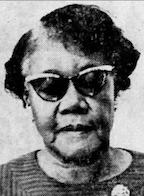A Black History Month Celebration of Educators and Leaders in the Blindness Field
This content is also available in:
Español (Spanish)
Black History Month is a time to recognize exceptional individuals who have made significant contributions to society. While everyone knows about iconic figures like Stevie Wonder and the late Ray Charles, who were not only gifted musicians but also blind, there are many other Black Americans who have shared their talents with the world. Among them are individuals who have worked tirelessly to advance the field of blindness and promote inclusivity in society.
Pioneering Education for Black Children Who Are Blind
While not all of these Black Americans have been blind themselves, they have played crucial roles in paving the way for those who are visually impaired. One such visionary leader was Dr. Laurence C. Jones, who established the Piney Woods School in 1909. Located in a rural area just south of Jackson, Mississippi, Dr. Jones aimed to provide academic and vocational agricultural education to Black children and grandchildren of former slaves living in poverty.
In 1920, Dr. Jones recognized a need: the education of Black children who were blind. He expanded the school’s mission to include visually impaired students, becoming a pioneer in this field. Dr. Jones authored numerous books and extended invitations to teachers, both Black and White, from across the country. These educators came to learn his innovative teaching methods for the blind, as well as those developed by his colleagues.
Martha Louise Morrow Fox
 photograph of Martha Louise Morrow Foxx, from a 1969 newspaper.
photograph of Martha Louise Morrow Foxx, from a 1969 newspaper.
In 1929, Martha Louise Morrow Foxx embarked on a remarkable journey. Her impact as the primary teacher for children with vision loss at Piney Woods School. Her dedication to this role endured for over a decade until 1942 when she assumed the esteemed position of school principal. This transition marked a pivotal moment in her career.
In 1950, Piney Woods School achieved a significant milestone when it received state funding, transforming it into a sister school of the Mississippi School for the Blind, based in Jackson. Foxx continued to showcase her leadership skills as she took on the role of principal at the Mississippi School for the Blind. She held this position until her well-deserved retirement in 1969.
Martha Louise Morrow Foxx’s life was a testament to resilience and determination. Despite facing near-blindness from infancy, she pursued higher education, earning both bachelor’s and master’s degrees. Her teaching methods were nothing short of revolutionary, far ahead of her time. Foxx adopted a hands-on approach, placing a strong emphasis on braille and large-print reading, independent living skills, and vocational training. Remarkably, these principles align seamlessly with today’s Expanded Core Curriculum (ECC).
True Influence Beyond the Classroom
Martha Foxx’s commitment to education extended beyond the classroom walls. She understood the value of experiential learning, often taking her students on engaging field trips into the nearby woods. These experiences honed their sensory perception and enriched their educational experiences.
Foxx’s influence was not confined to her immediate surroundings. She generously shared her innovative teaching methods with educators nationwide. Undoubtably, leaving an indelible mark on the field of education for the visually impaired. In a noteworthy turn of events, even the “white” school for the blind recognized the value of her curriculum, incorporating it into their own practices in the late 1940s.
Both educators were Inducted into APH’s Hall of Fame for Leaders and Legends of the Blindness Field in 2013.
Developing Sight-saving Technology and Breaking Barriers for Black Women
Dr. Patricia Bath didn’t just care for eyes; she pioneered tech to prevent cataract-induced blindness. In 1973, she became the first Black resident in ophthalmology, followed by joining UCLA’s Jules Stein Eye Institute faculty in 1975.
Early on, Dr. Bath discovered a double risk of blindness among Black individuals. She dedicated herself to equalizing access to quality eye care for underserved communities. The National Eye Institute reports higher risks for eye diseases, including cataracts, glaucoma, and diabetic retinopathy, in African Americans, leading to increased vision loss and blindness.
In 1976, Dr. Bath co-founded the American Institute for the Prevention of Blindness. A decade later, she invented the Laserphaco Probe, a groundbreaking laser technology restoring sight to cataract patients. Her 1988 patent made her the first Black woman to secure a medical patent.
Advocating for the Rights of People with Disabilities

Not all Black leaders in the field of blindness are historical; some are making history today. Haben Girma, a human rights lawyer, is the first deafblind Harvard Law School graduate. She champions disability justice, viewing disability as an opportunity for innovation. Those with visual or deafblindness often excel by creatively overcoming challenges.
Girma tirelessly advocates for equal opportunities for people with disabilities. She travels worldwide to educate individuals and organizations about the value of inclusion, benefiting everyone.
Her memoir, Haben: The Deafblind Woman Who Conquered Harvard Law, gained recognition in the New York Times and the TODAY Show. World leaders, including President Bill Clinton, Canadian Prime Minister Justin Trudeau, and German Chancellor Angela Merkel, have honored her. President Barack Obama recognized her as a White House Champion of Change, and the American Foundation for the Blind (AFB) bestowed upon her the Helen Keller Achievement Award.